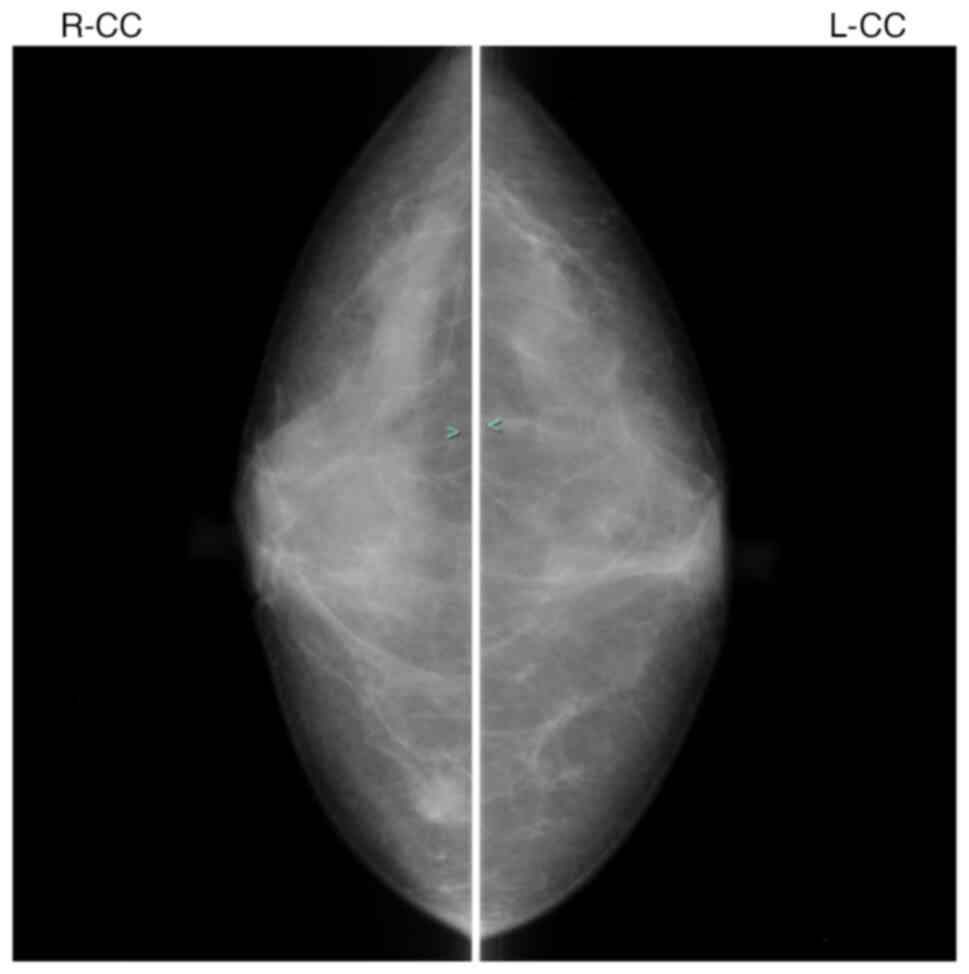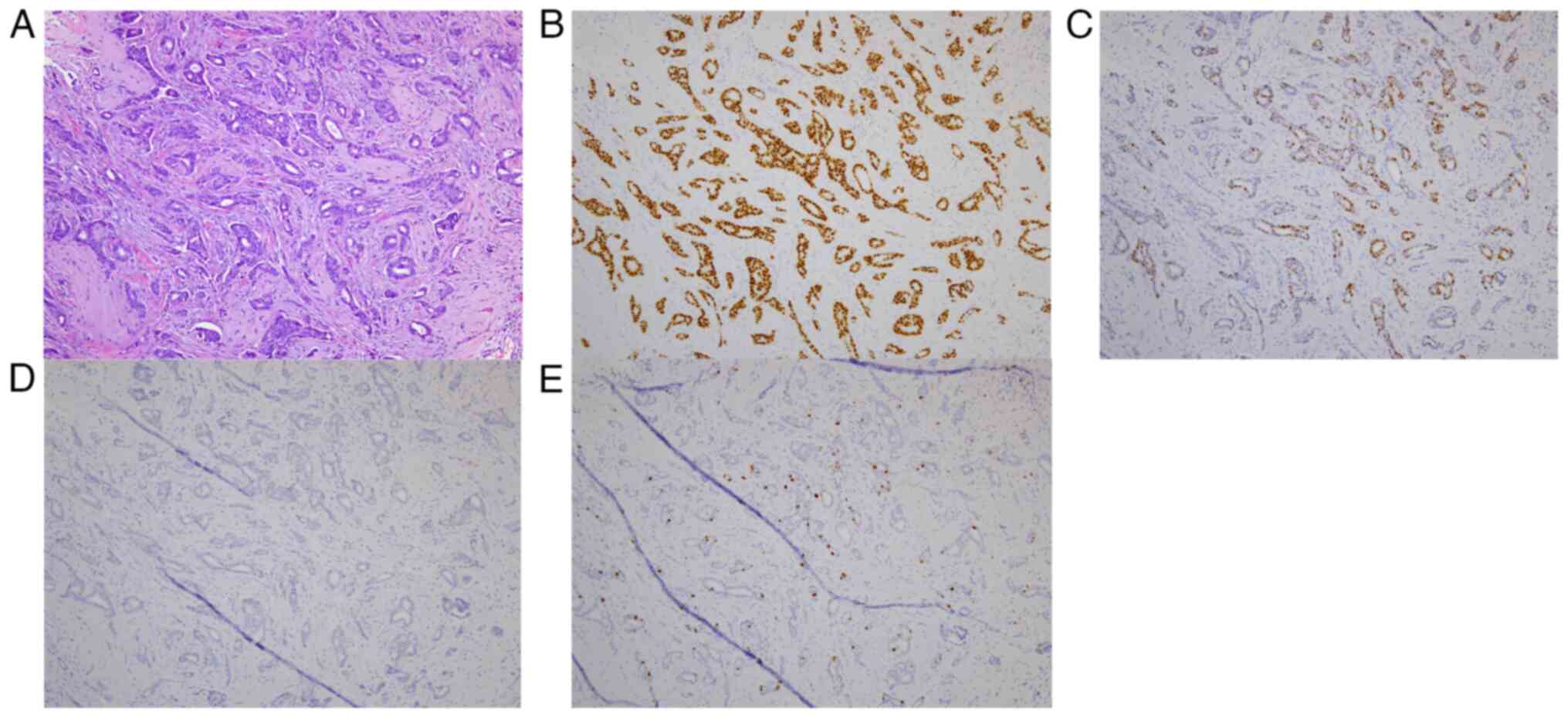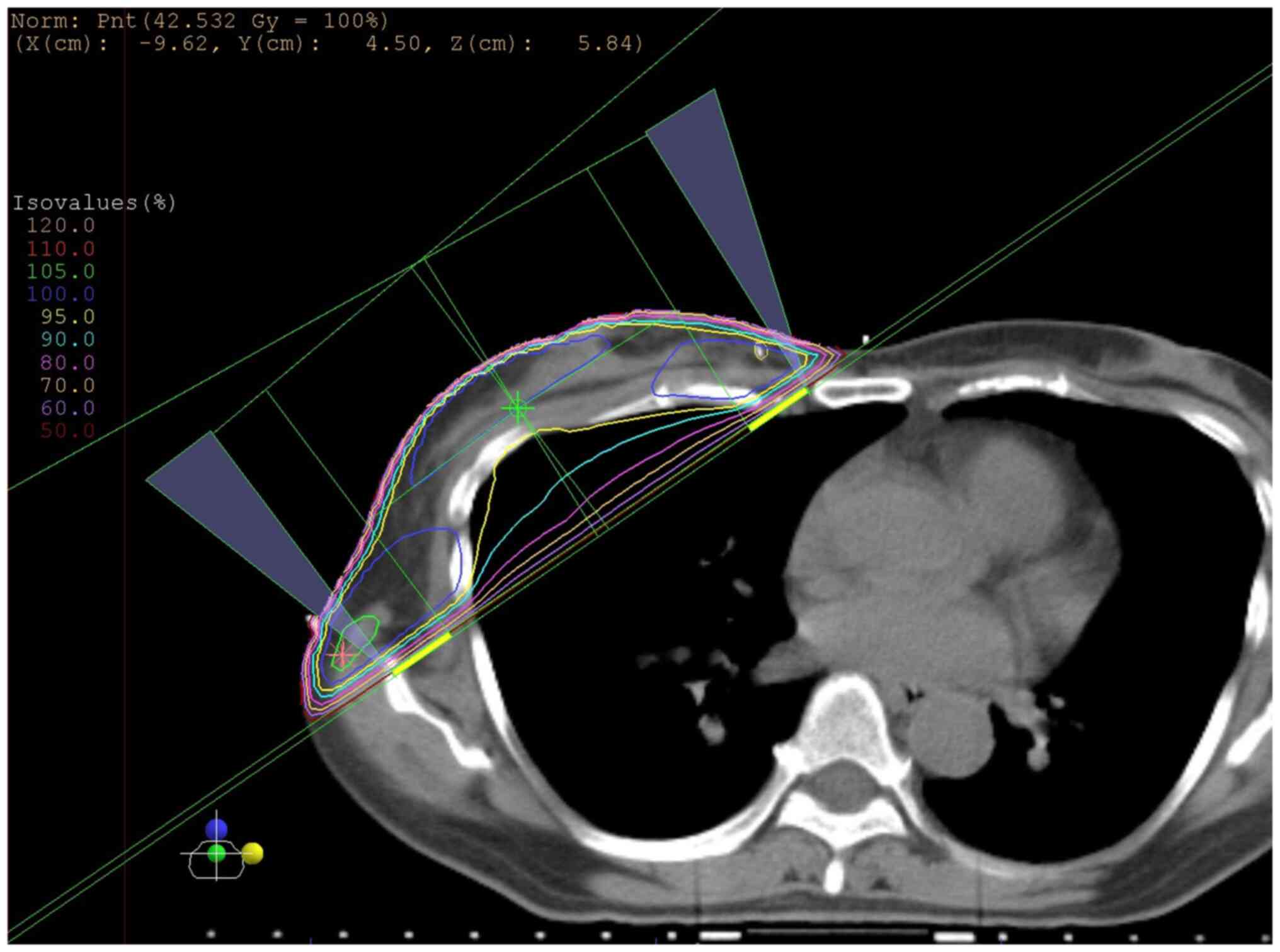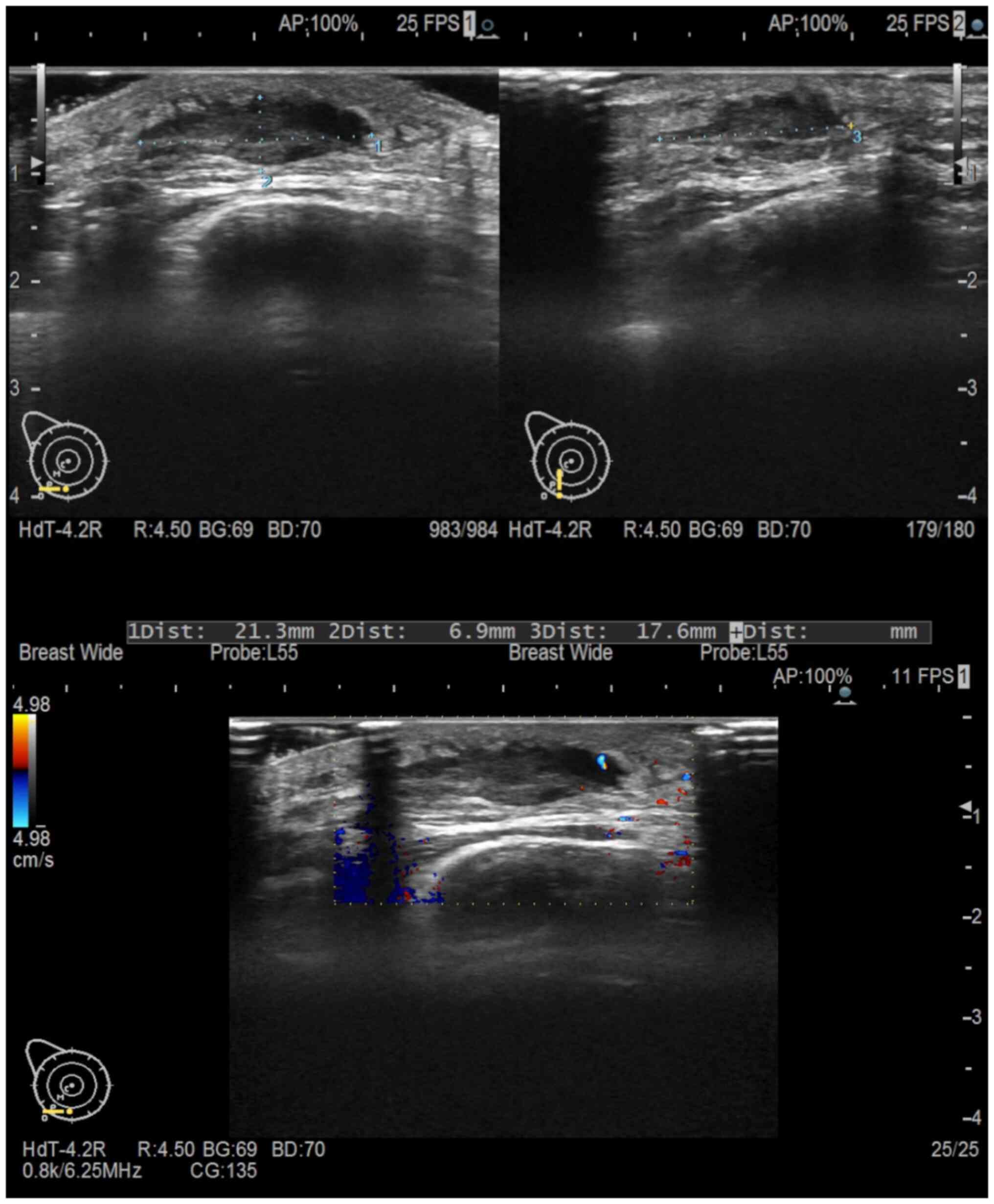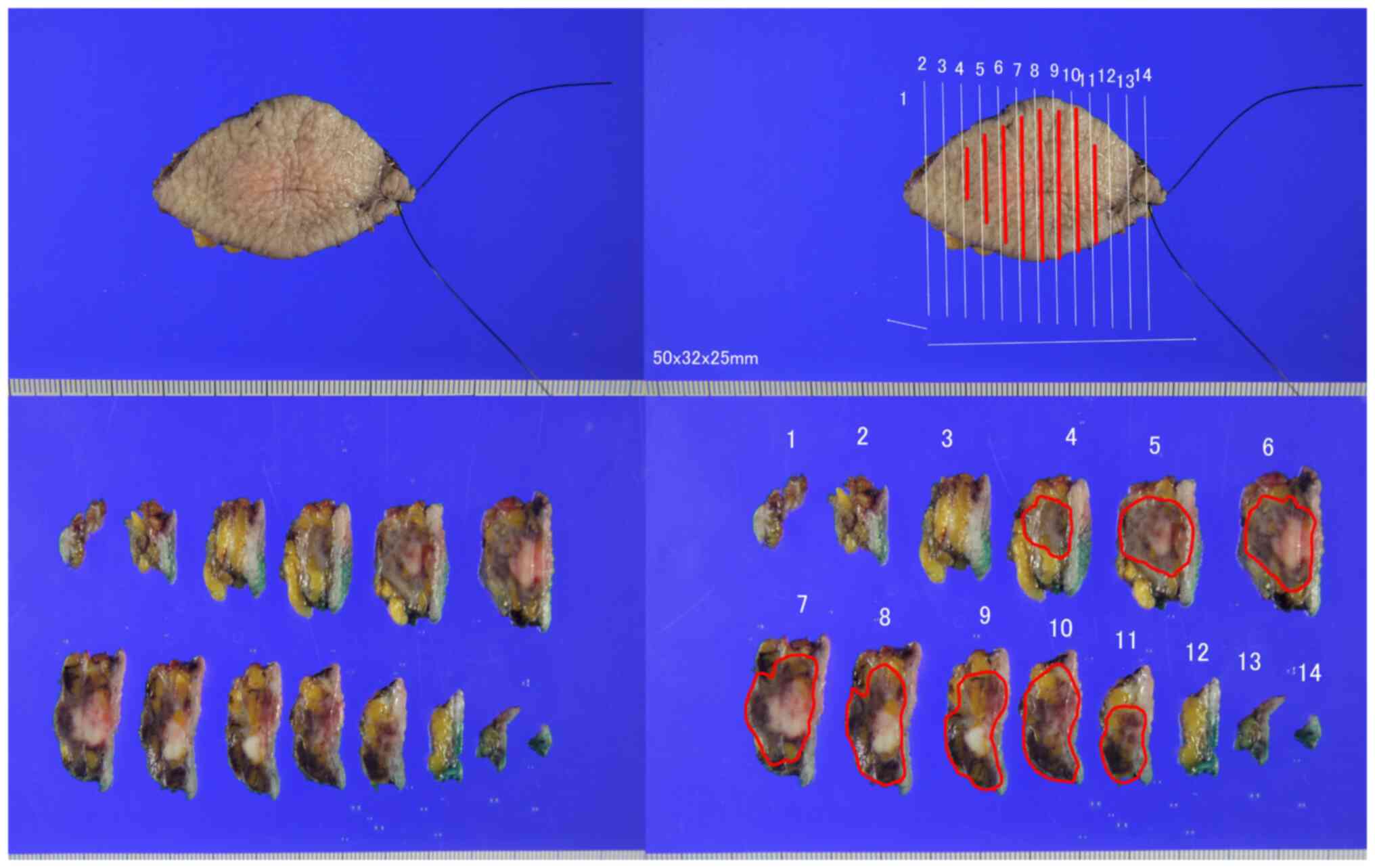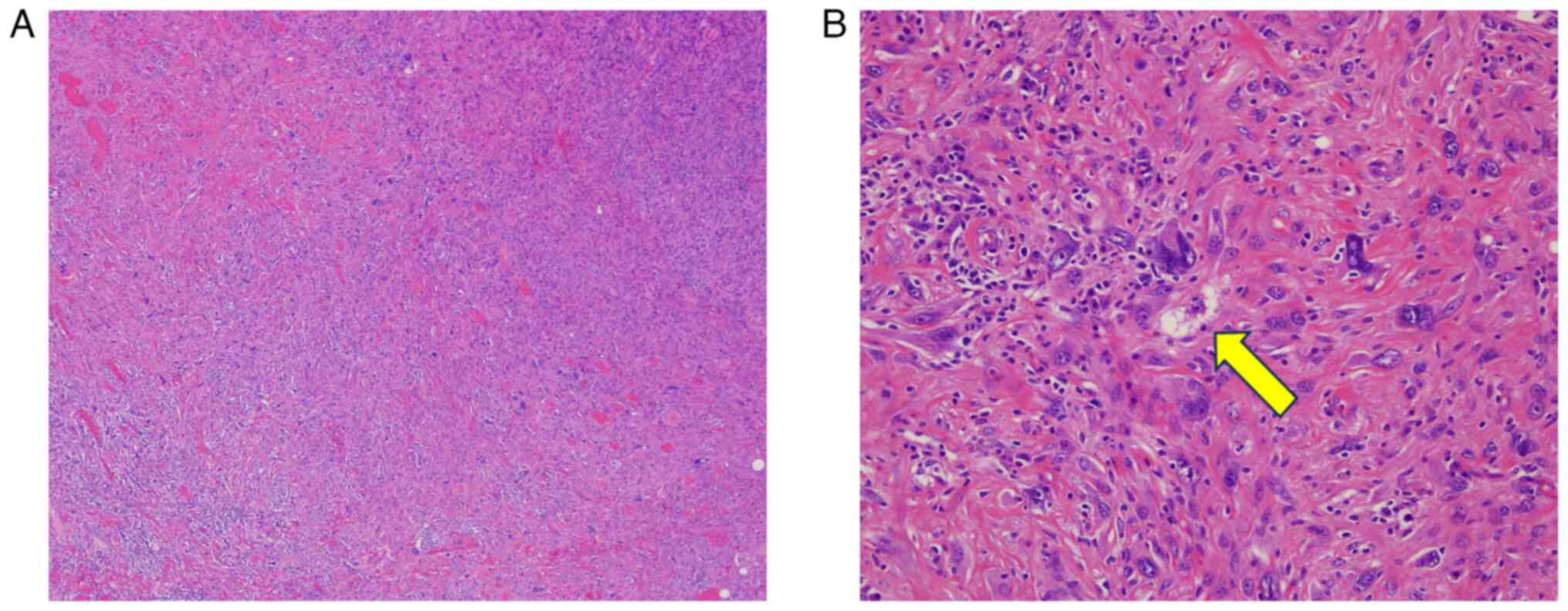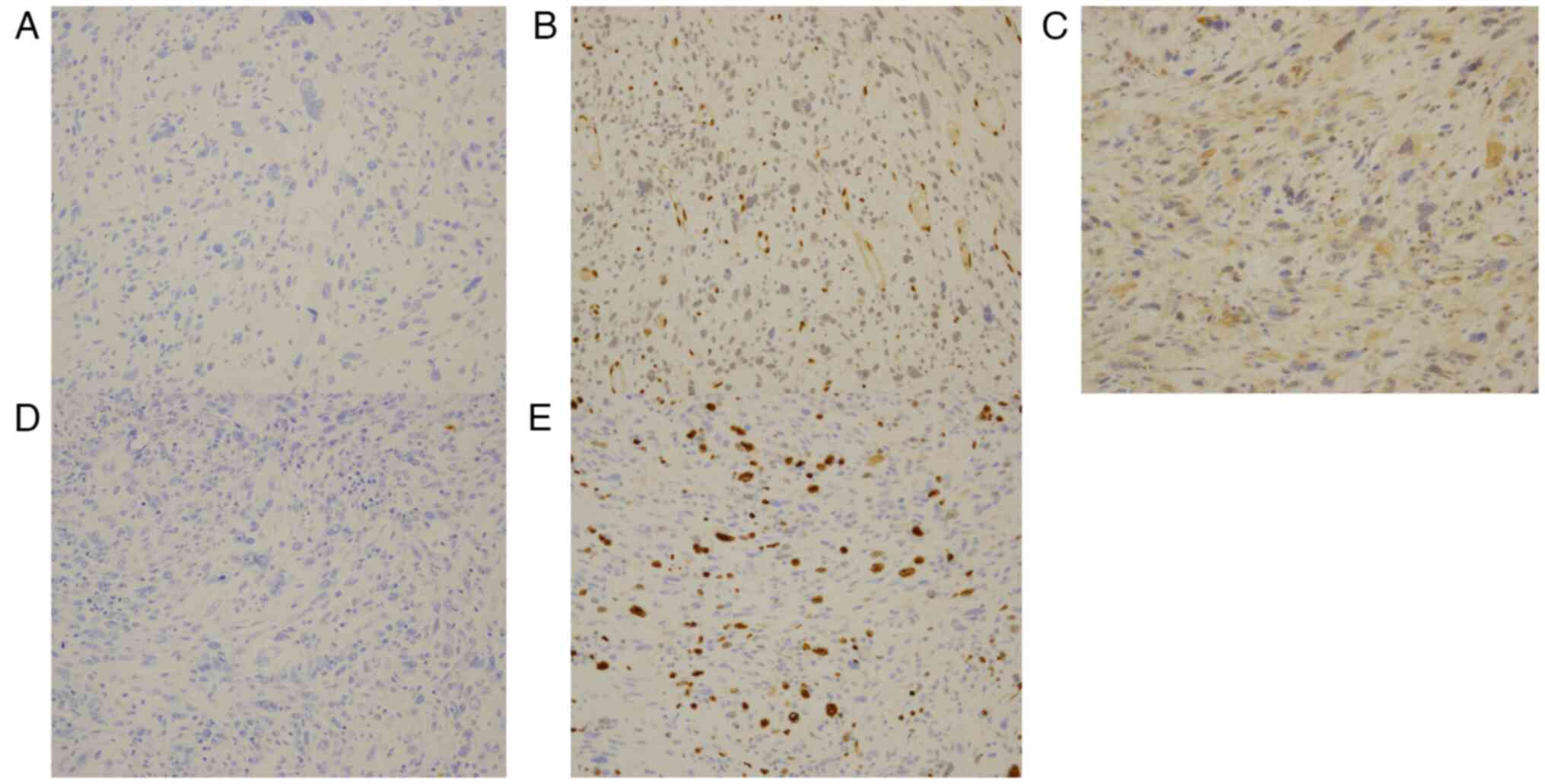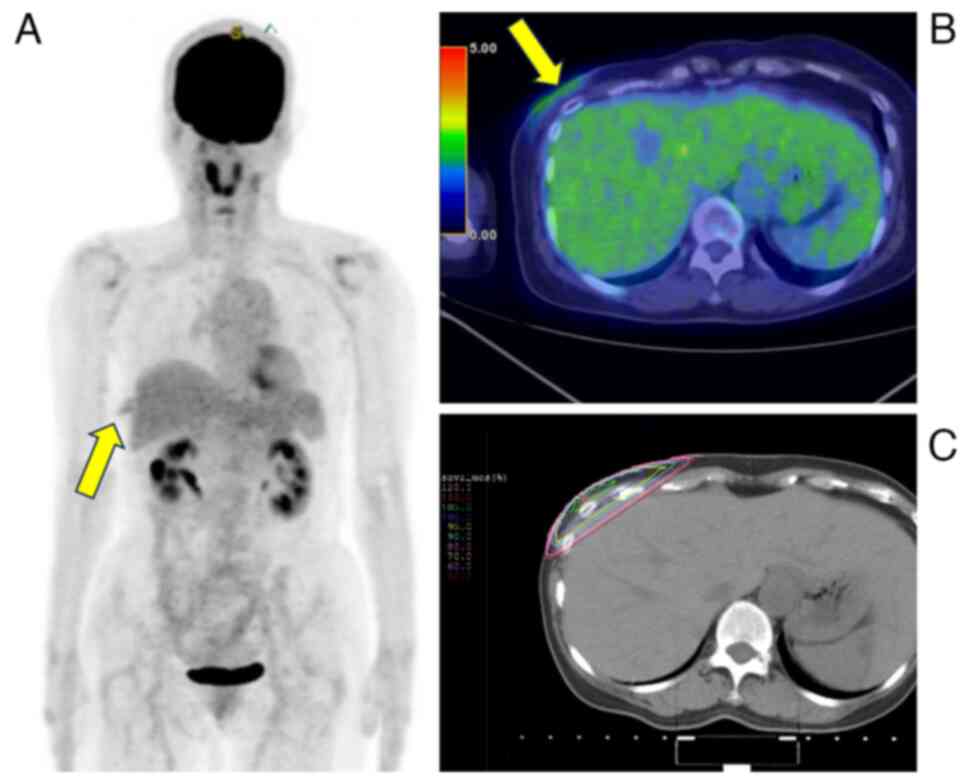Radiation‑induced pleomorphic liposarcoma after hypofractionated radiotherapy following breast‑conserving surgery: A case report and literature review
- Authors:
- Published online on: May 15, 2024 https://doi.org/10.3892/ol.2024.14457
- Article Number: 325
-
Copyright: © Watanabe et al. This is an open access article distributed under the terms of Creative Commons Attribution License.
Metrics: Total
Views: 0 (Spandidos Publications: | PMC Statistics: )
Total PDF Downloads: 0 (Spandidos Publications: | PMC Statistics: )
Abstract
Breast cancer is one of the leading causes of cancer globally. Radiotherapy following breast‑conserving surgery is the standard treatment of breast cancer. Recently, hypofractionated irradiation comprising 42.56 Gy in 16 fractions was selected as a viable radiation therapeutic option. Radiation‑induced sarcoma is the most prevalent secondary malignancy in patients undergoing radiotherapy after breast cancer surgery. Angiosarcomas are the predominant type of radiation‑induced sarcomas, whereas liposarcomas have rarely been reported. The present report details an uncommon instance of radiation‑induced pleomorphic liposarcoma that occurred 8 years after breast‑conserving surgery and hypofractionated radiotherapy. The patient visited the hospital due to hardening of the tissue beneath the skin of the right breast. Ultrasonography revealed a hypoechoic mass in the lower part of the right breast containing internal blood flow. An excisional biopsy revealed that the tumor contained infiltrating spindle‑shaped cells without a capsule containing pleomorphic cells. Lipoblasts were also observed and tended to differentiate into adipose tissue, leading to a diagnosis of pleomorphic liposarcoma. Immunostaining revealed negativity for cytokeratin AE1/AE3, ERG, MDM2 and S‑100 protein; the Ki‑67 index was ~20%. An enlargement resection involving a postoperative bed was performed because of close tumor margins. 18F‑fluorodeoxyglucose positron emission tomography/computed tomography revealed pale accumulation of 18F‑fluorodeoxyglucose in the right chest wall, which was interpreted as a postoperative change owing to the resection biopsy. The tumor was observed in the irradiated field with no distant metastases. Following extensive resection, the patient maintained a recurrence‑free survival period of 3 years and 2 months, during which no adjuvant therapy was administered. Therefore, follow‑up is necessary in patients with breast cancer treated with radiotherapy.



